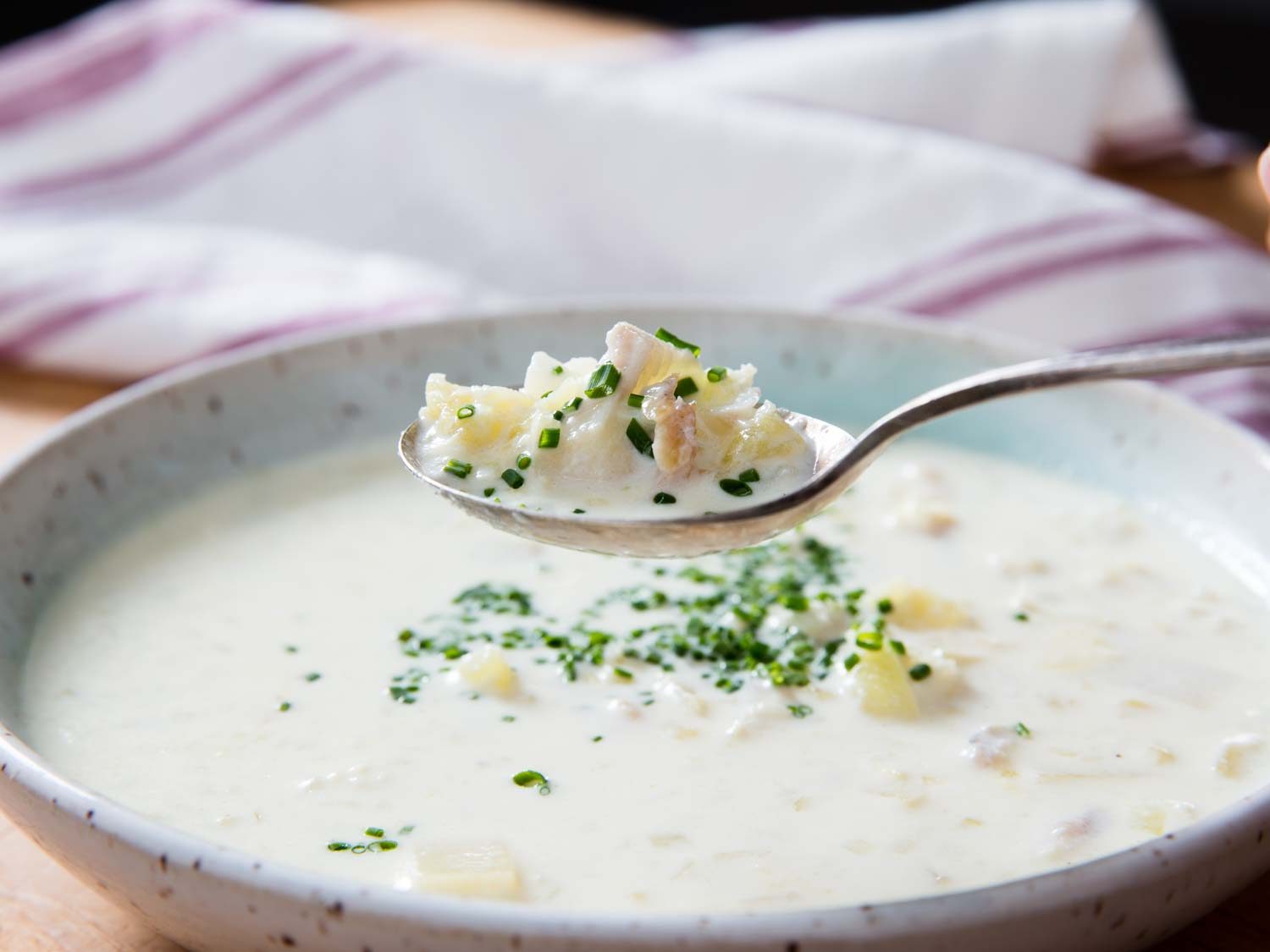
[Photographs: Vicky Wasik]
Last July, I took a trip to Alaska as a media guest of Alaska Seafood, the public-private partnership between the state of Alaska and the Alaska seafood industry. A few days into the trip, we were out on a boat not too far from Homer, reeling big floppy halibut onto the deck, and all I could think about was Cullen skink, Scotland’s smoky fish chowder.
This was, admittedly, a weird thing to be thinking of, since Cullen skink is made from haddock, not halibut, but brains make funny connections sometimes. I imagine the shared “h” of halibut and haddock had something to do with it and also the fact that they’re both white-fleshed fish. Alaska’s pristine mountains and chilly summer air also probably stirred up memories of a long-ago winter trip to the rugged Scottish Highlands. Alaska is magnitudes more vast, but those northern climes have something in common.
It’s taken me a while to get around to actually making Cullen skink and developing a recipe of my own, but I’m finally here with one, and—surprise!—I’ve worked out a method that allows you to smoke other white-fleshed fish, like halibut, in case you don’t want to track down the smoked haddock needed for the recipe.
About that smoked haddock: It goes by the name finnan haddie, named for Findon, Scotland, a fishing village near Aberdeen, and the fish itself. Craig Claiborne once wrote a colorful story about the origins of finnan haddie, but it’s almost too good to be true, the kind of apocryphal tale that nearly every family from Findon might claim as their own. It’s still worth reading. (And who knows? Maybe it really is the story of how they started smoking haddock in Findon.)
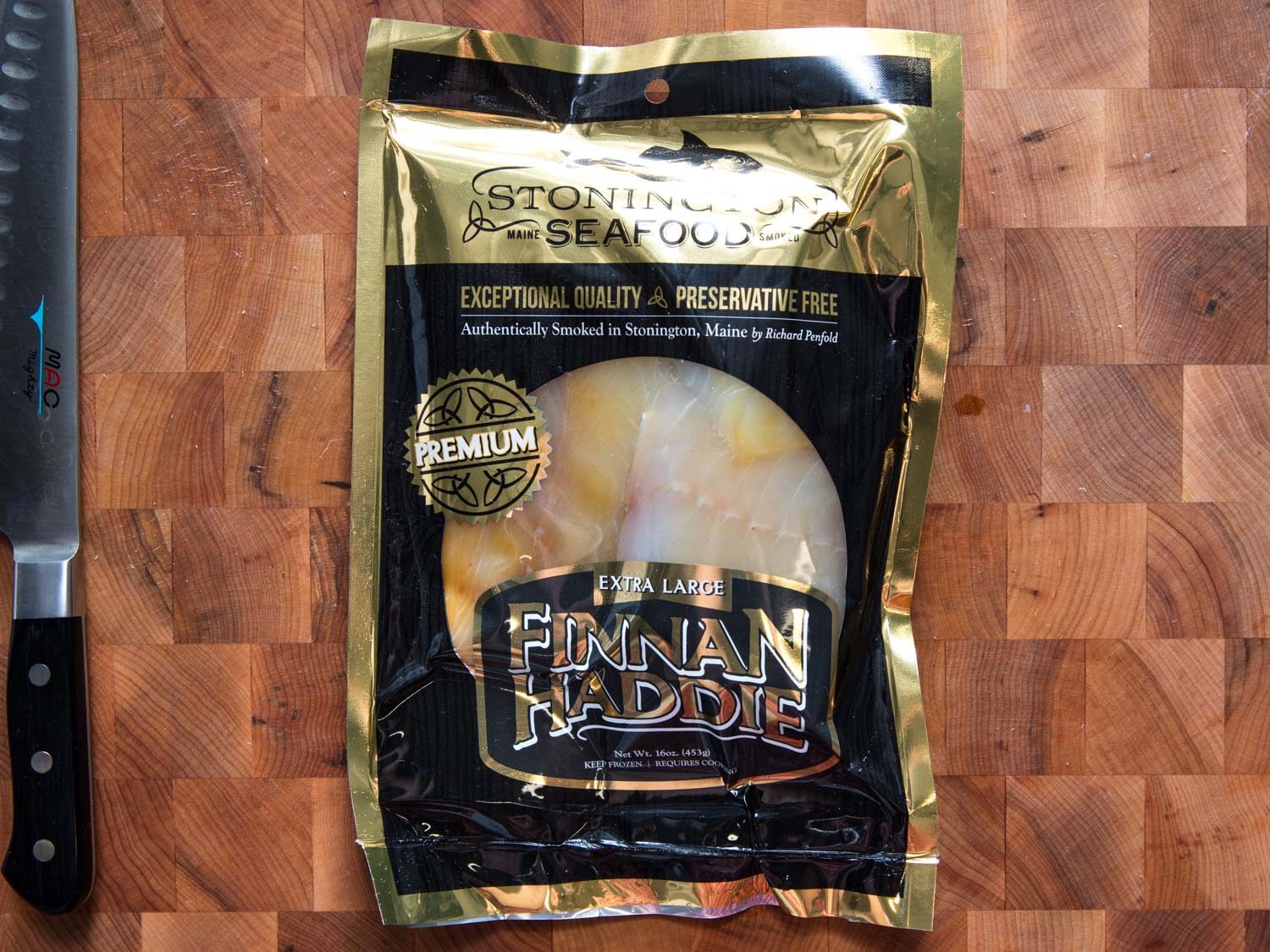
I ordered finnan haddie samples from a couple different US-based purveyors, and my favorite was from Stonington Seafood in Maine. Its thick fillets of haddock are a deep golden color with a rich wood-smoke aroma. They’re not cheap, at more than $20 per pound, but the quality is hard to argue with; it’s just beautiful smoked fish.
I can’t stress how special this fish is and what it does to the soup. Think of clam chowder made with bacon, but imagine all the flavor, both the smoke and the marine elements, coming from a single ingredient, so the result is both cleaner and no less complex. Add to that big, meaty flakes of fish, and Cullen skink starts to give clam chowder a run for its money. One could argue that Cullen skink is good enough to slug it out in the fight for the greatest chowder in the world and have a chance of winning (it would lose, however, in a tastiest-sounding-name contest).
It’s worth buying finnan haddie at least once, to learn its flavor and see what magic it can work in an otherwise very basic preparation. (It’s also delicious for breakfast—poached in milk, drained, and served with melted butter poured on top.) If ordering a shipment of finnan haddie is out of the question, you can cold-smoke any lean white-fleshed fish—I played around with a few indoor methods—whether haddock or cod or, even, halibut.
The first step in the cold-smoking process is to brine the fish in a sugar and salt solution; then let the brined fish dry uncovered, which will dry out the surface. After that, it can be smoked. If you own a true cold-smoking apparatus, you can use that, following a more traditional cold-smoking method for fish. Because I didn’t have that, and figured most people don’t, I focused on indoor-safe methods. I had high hopes for wok-smoking the fish, but it failed. I simply couldn’t generate a sustained enough blast of smoke in the wok to reach the level of smokiness in the fish needed to make something like Cullen skink.
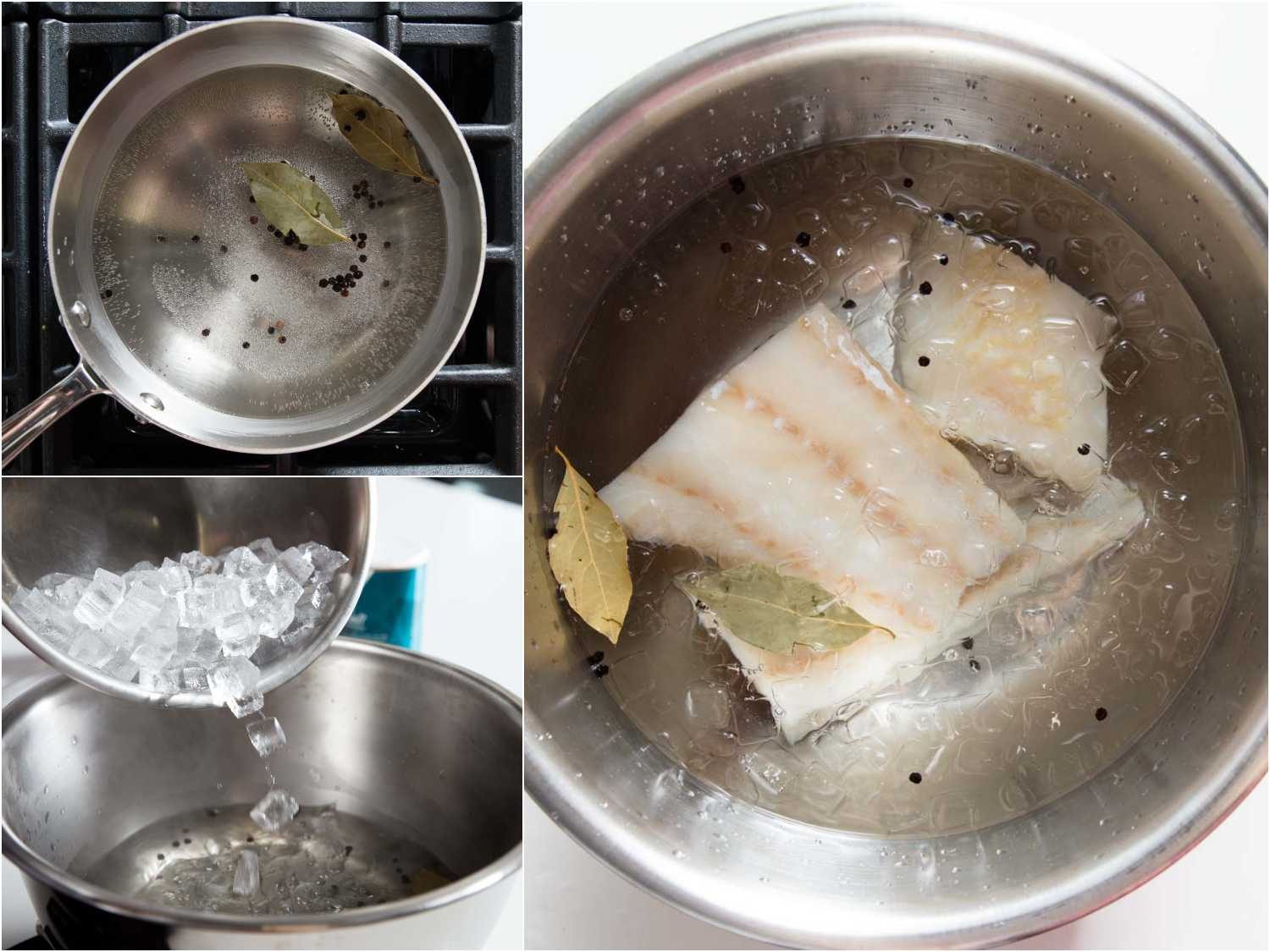
Before smoking the fish, it is briefly brined in a salt and sugar solution with bay leaves and black peppercorns.
I had better luck with the Smoking Gun, which, yes, is a piece of equipment you’d need to buy, but then again, you could go crazy smoking all sorts of things with it if you did get one. Even with the Smoking Gun, I had some trouble getting the fish smoky enough at first, for the same reason as the wok. Having set it in a baking dish covered with plastic wrap, I just couldn’t get a lengthy enough blast of smoke on the fish to really penetrate it.
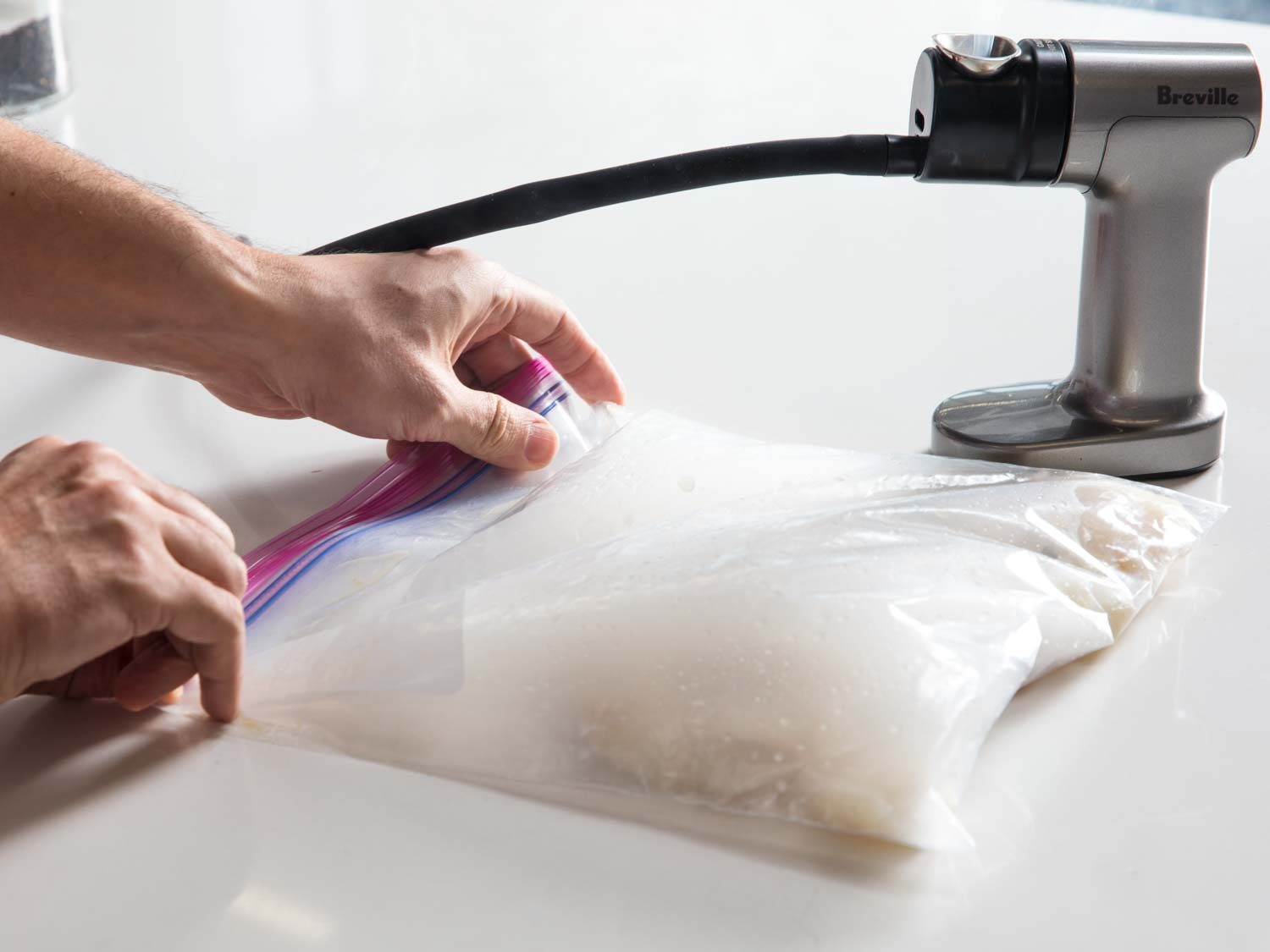
But then I tried putting the fish in a zipper-lock bag, filling that bag with smoke, and sealing it so the smoke and fish were trapped in there together. Every 30 minutes, I filled the bag with a new blast of smoke, and after five rounds like that, the fish was getting pretty smoky; you could even go longer for deeper smoke flavor. The one thing the Smoking Gun method doesn’t do is dry the fish out the way a real cold-smoker does. You get the smoky flavor, but you don’t get quite the same texture and golden stain on the exterior. Flaked into a soup as it is in Cullen skin, that’s not too much of a problem.
Making the soup itself is an uncomplicated process. I tried to make it more complicated, thinking I could fancy up the soup in appealing ways, but some dishes resist these types of upgrades. I experimented with both the more traditional method of cooking and then roughly mashing some potatoes into the soup, and also a more refined approach of blending a portion of the potatoes into it until silky smooth and adding the rest as perfectly tender cubes, but my extra efforts produced a more soulless soup (one that was prone to curdling). The partially mashed potatoes are so much more appealing to eat, thickening the liquid while offering a range of potatoey bites, from tiny tender mashy bits to big soft chunks.
I tried adding leeks to the basic base of sautéed onions, but they tinged the soup green and made it too sweet. I had other plans, ones that included white wine and spices and a wider range of fresh herbs, and one by one they fell away as my test batches proved that Cullen skink is best when you embrace its beautiful simplicity.
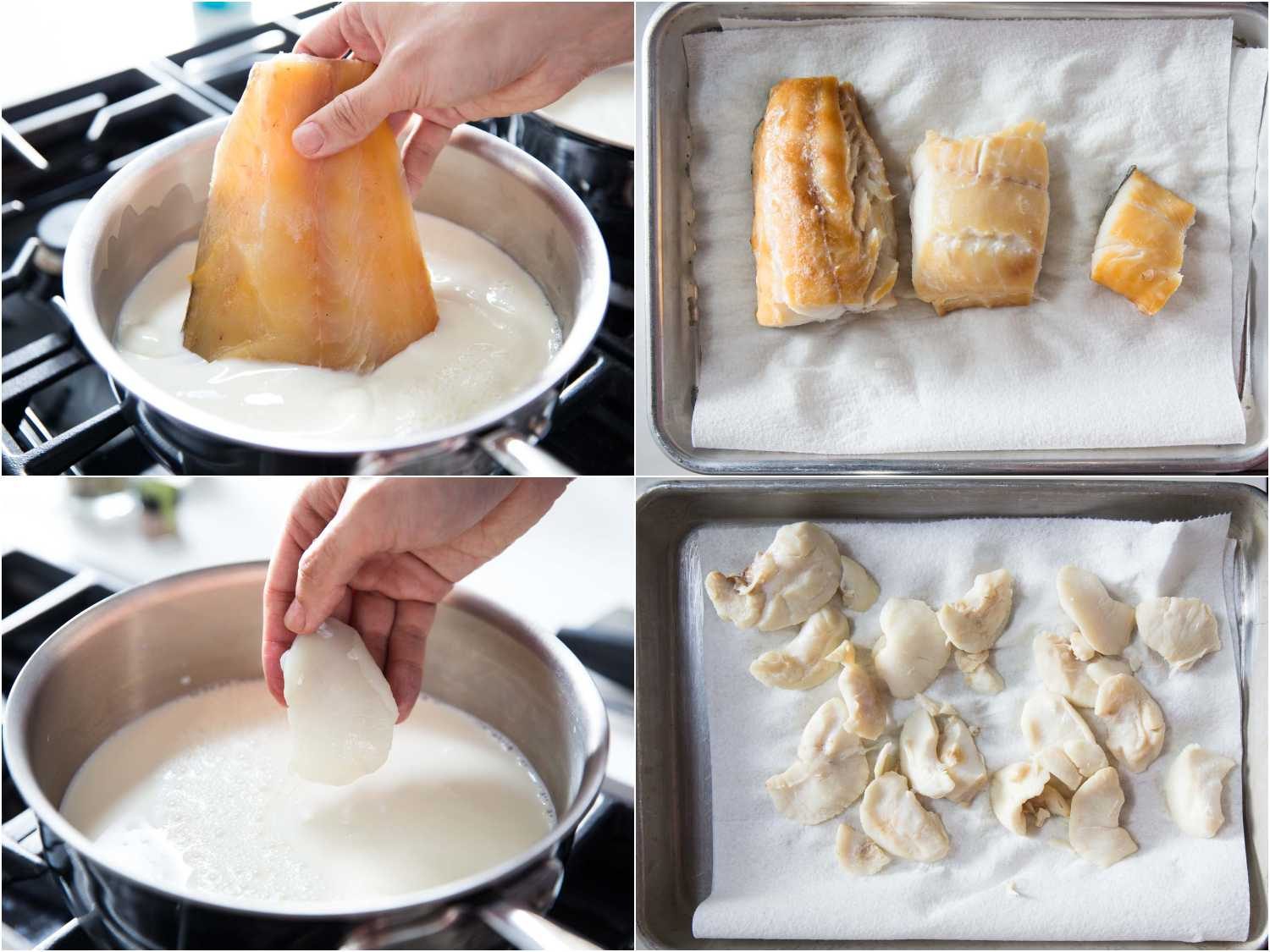
Top row, poaching and draining real finnan haddie in milk; bottom row, poaching and draining homemade cold-smoked halibut.
The steps go like this: Poach the fish in milk until just done, and remove the fish and transfer the milk to another container. Wash the pan, then sweat minced onion in butter until tender. Back in goes the milk, followed by diced potatoes, which you simmer until tender, then partially mash them up right in the pot. The fish gets flaked back in, and the soup is finished with some cream, salt, and pepper.
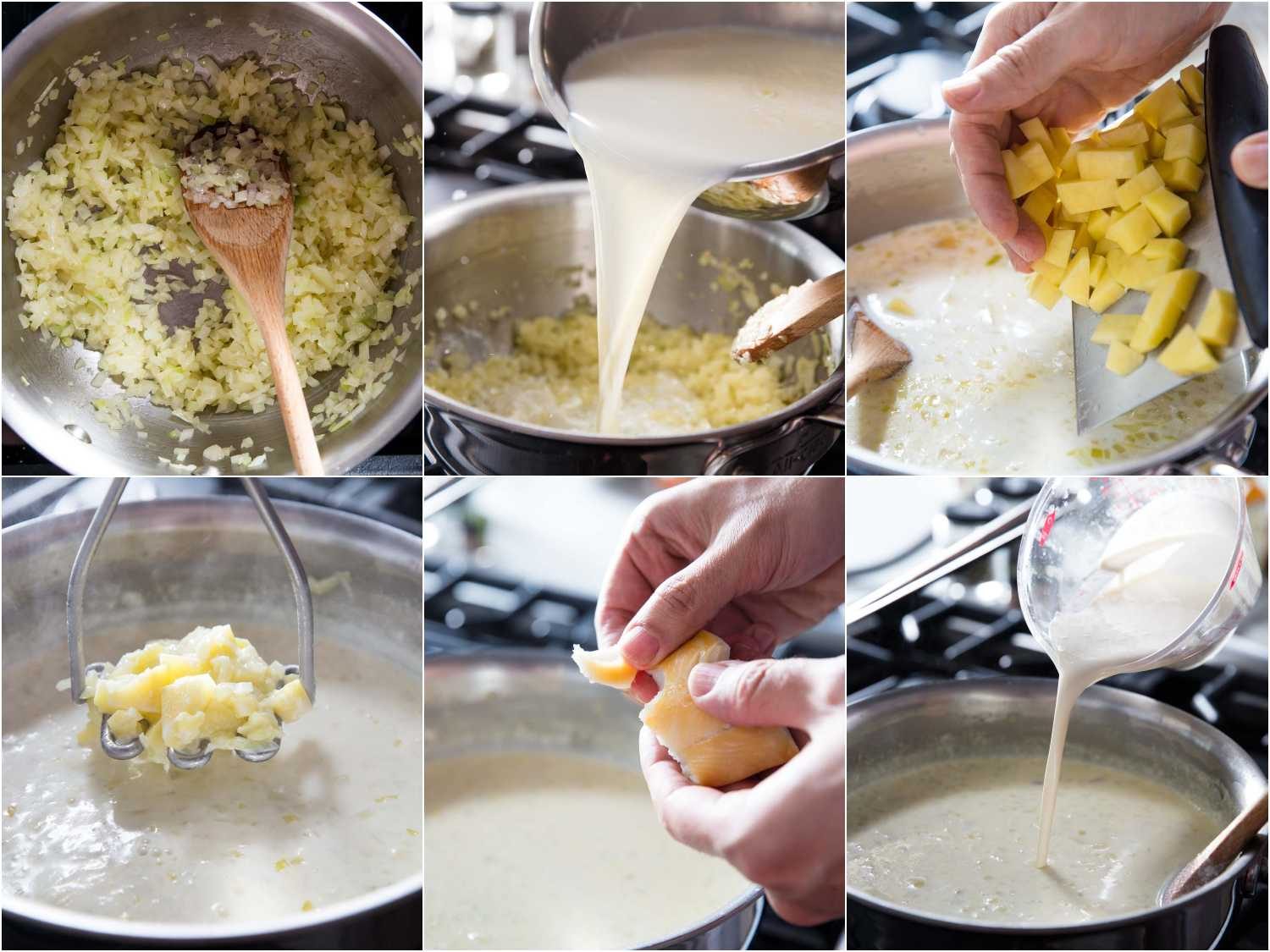
The one semifancy touch that did work was a sprinkle of fresh minced chives on top. Even the most rustic dishes can be dressed up just a touch.
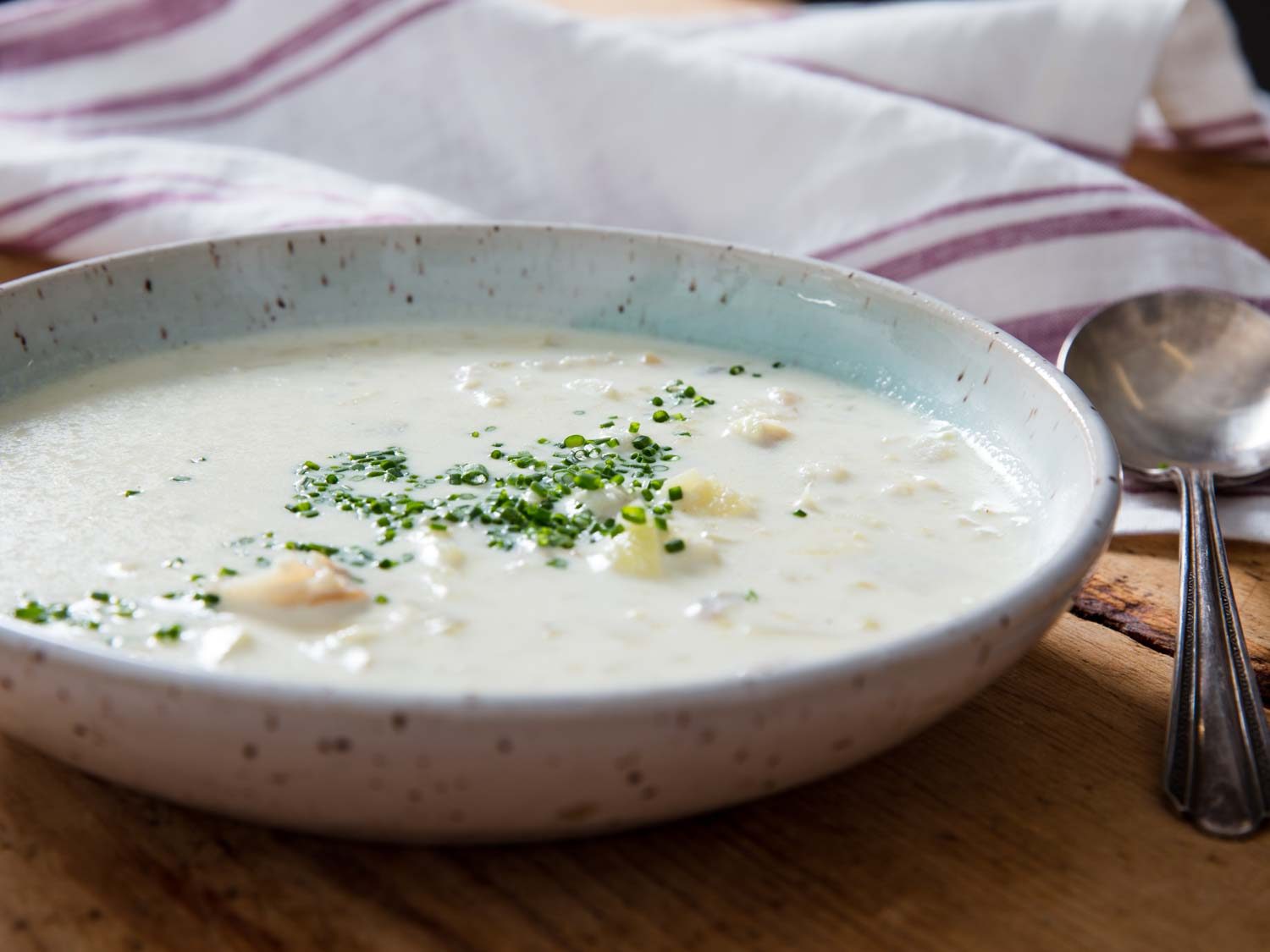
This post may contain links to Amazon or other partners; your purchases via these links can benefit Serious Eats. Read more about our affiliate linking policy.
Source link